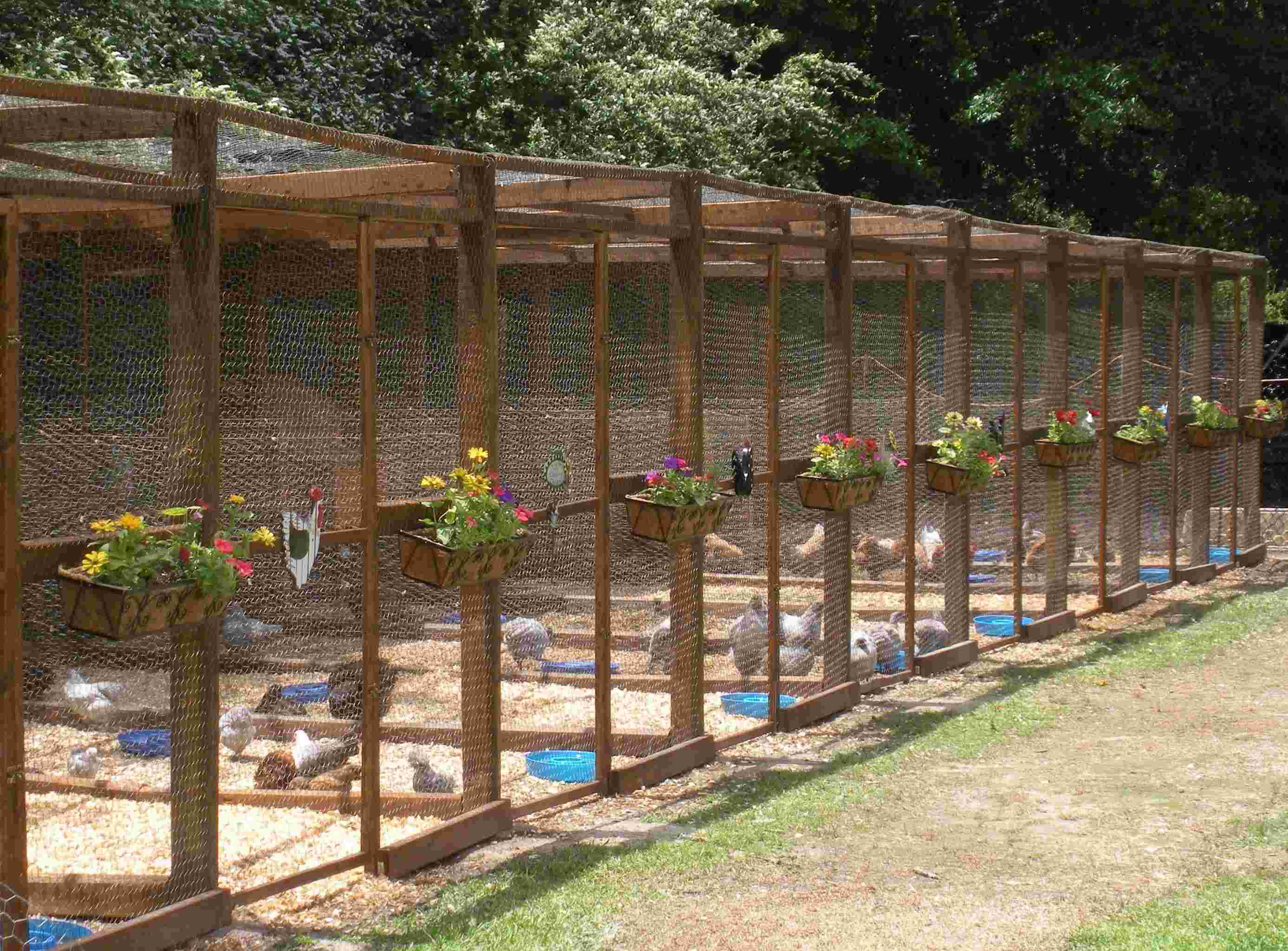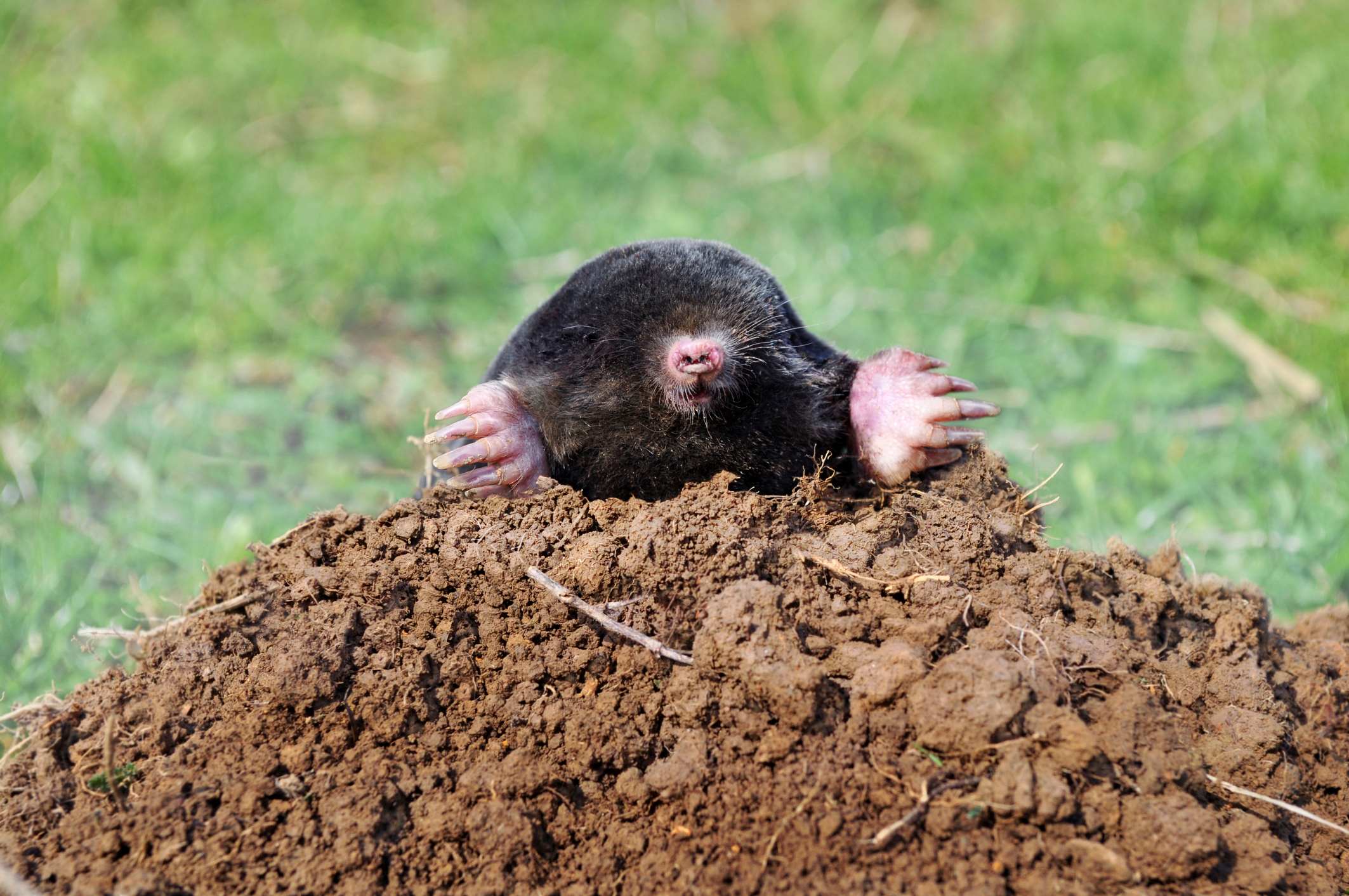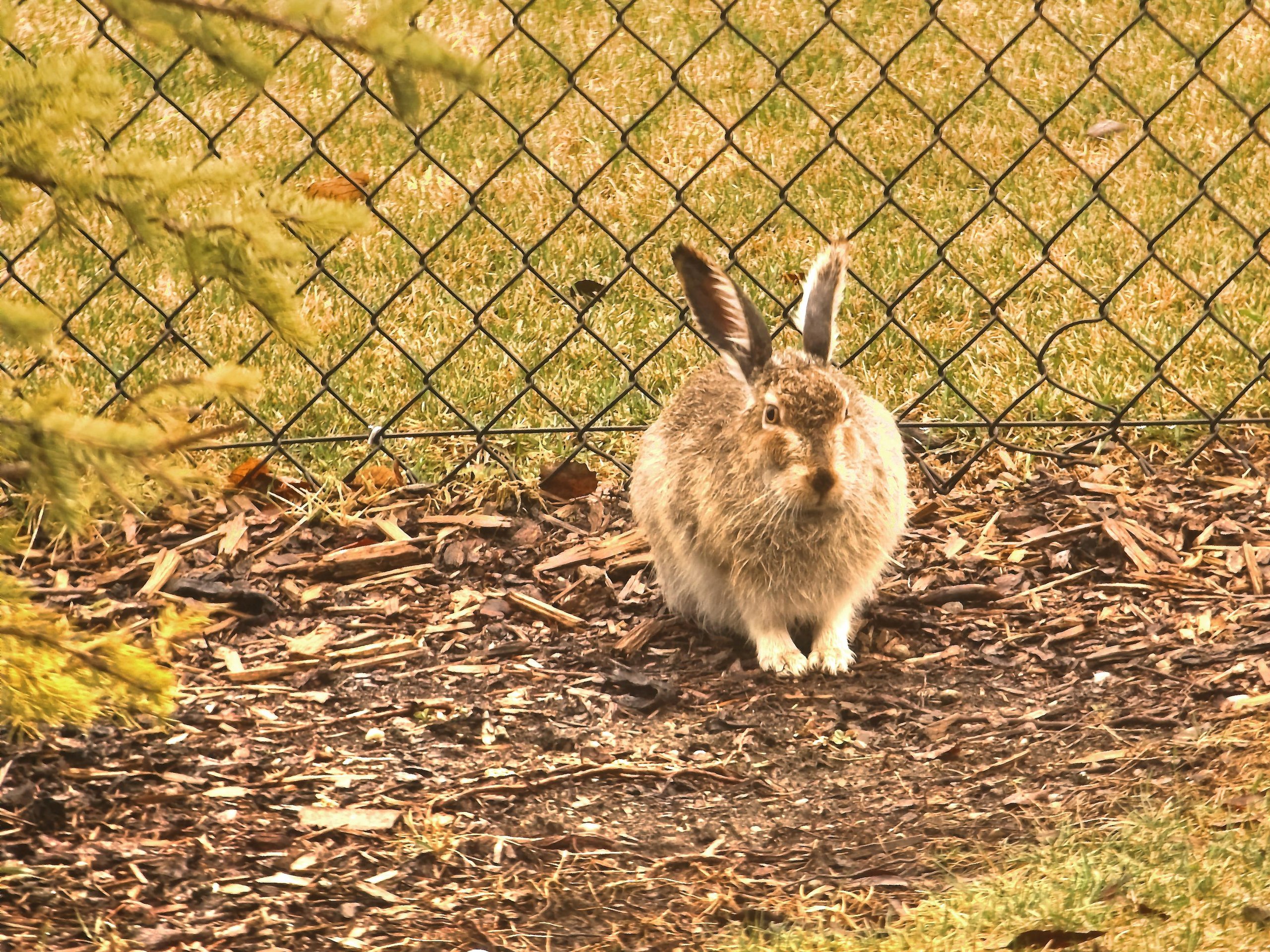Home>Gardening Basics>What Are Backyard Breeders


Gardening Basics
What Are Backyard Breeders
Published: August 5, 2023
Learn the importance of understanding soil and how it affects backyard breeders. Discover the key factors that contribute to successful soil management and breeding practices.
(Many of the links in this article redirect to a specific reviewed product. Your purchase of these products through affiliate links helps to generate commission for Chicagolandgardening.com, at no extra cost. Learn more)
Table of Contents
Introduction
Backyard breeders have become a topic of concern and debate in the world of pet ownership and animal welfare. Unlike responsible breeders who follow ethical guidelines and prioritize the health and well-being of their animals, backyard breeders are individuals who breed animals without proper knowledge, experience, or consideration for the consequences.
Backyard breeding often takes place in unsanitary or cramped conditions, where profits are prioritized over the health and welfare of the animals. This practice can lead to numerous negative consequences, both for the animals involved and for potential pet owners.
It is important to differentiate between backyard breeders and responsible breeders, as the latter play a crucial role in promoting healthy, well-adjusted animals. Responsible breeders invest time, effort, and resources to produce dogs and cats that are free from genetic disorders, have good temperaments, and are well-socialized.
Identifying and avoiding backyard breeders is essential for anyone considering adding a pet to their family. By understanding the characteristics and warning signs of backyard breeders, individuals can make informed decisions, promote animal welfare, and contribute to the overall improvement of the breeding industry.
Throughout this article, we will explore the definition of backyard breeders, discuss their characteristics, highlight the negative consequences of backyard breeding, and compare them to responsible breeders. Finally, we will provide practical tips on how to identify and avoid backyard breeders when searching for a new four-legged family member.
Definition of Backyard Breeders
Backyard breeders are individuals who engage in the breeding of animals, particularly dogs and cats, without the necessary knowledge, experience, or resources to do so responsibly. These breeders often operate out of their own homes or backyards, hence the term “backyard breeders.”
Unlike reputable and responsible breeders who focus on improving the breed, maintaining breed standards, and prioritizing the health and well-being of the animals, backyard breeders are primarily motivated by profit.
Backyard breeders typically lack proper understanding of genetics, breed standards, and responsible breeding practices. They often breed animals with little regard for their health, temperament, or genetic diseases that may be prevalent within certain breeds.
These breeders frequently neglect proper socialization and veterinary care for the animals. They may not provide adequate living conditions or medical attention, leading to an increased risk of physical and behavioral issues in the progeny.
Without proper screening or health testing, backyard breeders are more likely to produce animals with hereditary diseases or temperament problems. These animals may suffer from genetic conditions that can lead to significant health issues, negatively impacting their quality of life and potentially resulting in hefty veterinary bills for their owners.
It is important to note that not all small-scale breeders operating out of their homes are backyard breeders. Responsible breeders who focus on the well-being of their animals and adhere to ethical breeding practices can also operate on a smaller scale. The key distinction lies in their commitment to the welfare and improvement of the breed, rather than the pursuit of financial gain alone.
Characteristics of Backyard Breeders
Backyard breeders can be identified by certain common characteristics that set them apart from responsible breeders. Understanding these characteristics can help potential pet owners avoid supporting irresponsible breeding practices and prevent them from inadvertently contributing to the perpetuation of animal welfare issues.
1. Lack of Knowledge and Experience: Backyard breeders often lack the necessary knowledge and experience related to responsible breeding practices. They may not have a deep understanding of genetics, breed standards, or the potential health issues inherent in certain breeds.
2. Absence of Health Testing: Unlike responsible breeders who prioritize the health and well-being of their animals, backyard breeders rarely conduct proper health testing. This includes tests for hereditary diseases and genetic disorders that may be prevalent in specific breeds.
3. Focus on Quantity over Quality: Backyard breeders are primarily motivated by profit, aiming to produce as many puppies or kittens as possible. This focus on quantity often leads to compromised animal welfare, as they prioritize breeding frequency rather than ensuring the health and proper care of the animals.
4. Lack of Socialization and Training: Proper socialization and training are critical for the development of well-adjusted pets. However, backyard breeders often fail to provide adequate socialization opportunities for their animals, leading to behavioral problems and difficulties in adapting to new environments.
5. Unkempt Living Conditions: Backyard breeders may keep their animals in unsanitary or cramped living conditions. These suboptimal conditions can lead to health issues, such as infections or infestations, and prevent the animals from developing in a healthy and happy manner.
6. Absence of Responsible Breeding Principles: Responsible breeders prioritize the improvement of the breed, adherence to breed standards, and the overall well-being of their animals. In contrast, backyard breeders often lack a commitment to these principles, focusing solely on monetary gain without considering the long-term consequences for the breed and future pet owners.
By recognizing these characteristics, potential pet owners can make educated decisions when searching for a new pet, ensuring that they support responsible breeders who prioritize the health and welfare of the animals.
Negative Consequences of Backyard Breeding
Backyard breeding can have severe negative consequences for both the animals involved and the wider community. Understanding these consequences is crucial in raising awareness about the importance of responsible breeding practices and promoting animal welfare.
1. Health Issues: Animals bred by backyard breeders are at a higher risk of genetic disorders, hereditary diseases, and other health issues. Without proper health testing and knowledge of breed-specific conditions, these animals may suffer from debilitating health conditions that can lead to a diminished quality of life or premature death.
2. Behavioral Problems: Backyard breeding often results in animals with inadequate socialization and training. This can lead to behavioral problems that make it challenging for them to adapt to new environments or interact with humans and other animals. Behavioral issues can range from anxiety and fearfulness to aggression, making it difficult to provide them with a loving and stable home.
3. Financial Burden for Owners: Animals bred by backyard breeders may develop health problems that require costly veterinary care. This places a significant financial burden on their owners, who may have to bear the expenses of treating and managing these conditions. Additionally, the lack of proper documentation and registration may limit the availability of insurance coverage for these animals.
4. Pet Overpopulation: Backyard breeding contributes to pet overpopulation, particularly with dogs and cats. The uncontrolled breeding and lack of responsible placement result in an excess number of animals without enough homes to accommodate them. This leads to overcrowded shelters, euthanasia of healthy animals, and an increased burden on animal welfare organizations.
5. Lowered Standards for the Breed: Backyard breeding often neglects breed standards and the importance of maintaining the integrity of specific breeds. This can result in a decline in overall breed quality and the loss of desirable traits. It undermines the efforts of responsible breeders who work diligently to preserve breed standards and improve the breed through selective breeding.
6. Lack of Support and Education: Backyard breeders typically do not provide adequate support, education, or resources to potential pet owners. This can include guidance on training, grooming, nutrition, or general care. As a result, new pet owners may face challenges in properly caring for their animals, leading to frustration and potential abandonment.
By understanding these negative consequences, individuals can make informed choices when acquiring pets and actively support responsible breeding practices that prioritize the health, well-being, and long-term future of the animals.
Differences between Backyard Breeders and Responsible Breeders
There are clear distinctions between backyard breeders and responsible breeders in terms of their practices, priorities, and overall commitment to the well-being of the animals. Understanding these differences is essential for individuals looking to acquire a pet and support ethical breeding practices.
1. Breeding Practices: Responsible breeders meticulously plan their breedings, taking into account the health, temperament, and conformation of the animals involved. They conduct health tests, screening for genetic diseases and conditions that may be prevalent in the breed. In contrast, backyard breeders often breed without regard for these factors, resulting in increased risk of hereditary diseases and poor overall health in the offspring.
2. Emphasis on Health and Welfare: Responsible breeders prioritize the health and welfare of their animals. They provide proper nutrition, veterinary care, and socialization from birth to ensure the physical and mental well-being of the animals. Backyard breeders, on the other hand, may neglect these vital aspects, leading to health issues, behavioral problems, and substandard living conditions for the animals.
3. Breed Standards and Improvement: Responsible breeders adhere to and strive to improve breed standards set by reputable kennel clubs or breed organizations. They carefully select breeding pairs to maintain desired breed traits and improve upon any weaknesses. In contrast, backyard breeders often disregard breed standards, leading to the production of animals that deviate from the ideal characteristics and lack the desired qualities of the breed.
4. Lifetime Support and Responsible Placements: Responsible breeders provide ongoing support to the new owners of their animals. They offer guidance on training, nutrition, and overall care throughout the pet’s lifetime. In contrast, backyard breeders typically do not offer the same level of support, leaving new owners without the necessary resources and knowledge to properly care for their pets.
5. Breeding Ethics and Goals: Responsible breeders operate with a strong sense of ethics and a genuine passion for the breed. Their main goal is to produce healthy, well-adjusted animals that contribute positively to the breed and bring joy to their owners. Backyard breeders, however, are primarily motivated by financial gain and often overlook the best interests of the animals.
By recognizing these differences, individuals can make informed decisions when choosing a breeder. Supporting responsible breeders not only ensures the well-being of the animal but also encourages ethical breeding practices, which ultimately benefits the entire animal community.
How to Identify and Avoid Backyard Breeders
Identifying and avoiding backyard breeders is essential for those looking to add a new pet to their family. By being proactive and informed, individuals can make responsible choices that prioritize the well-being of the animals and support ethical breeding practices. Here are some tips on how to identify and avoid backyard breeders:
1. Do Your Research: Before committing to a breeder, thoroughly research different breeds, their specific health concerns, and reputable breeding practices. This will help you identify red flags and distinguish responsible breeders from backyard breeders.
2. Visit the Breeder: Arrange a visit to the breeder’s facility or their home. Observe the living conditions of the animals and assess their overall health and well-being. Responsible breeders are typically transparent and encourage potential owners to visit them.
3. Ask for Documentation: Request documentation that verifies health testing and pedigrees. A responsible breeder will readily provide health clearances for the parents, including genetic testing for breed-specific conditions. They will also provide registration papers and pedigrees for the puppies.
4. Meet the Parents: Ensure you have the opportunity to meet the parents of the puppies or kittens. Observing their temperament and overall health can give you insight into the quality of the breeding program.
5. Question the Breeder: Ask the breeder about their breeding program, their experience, and their goals for the breed. Responsible breeders are knowledgeable and passionate about their breeds and will readily address any concerns or questions you may have.
6. Referrals and Reviews: Seek referrals or read online reviews from previous clients. Feedback from other pet owners can provide valuable insights into the breeder’s reputation and the quality of their animals.
7. Avoid Puppy Mills and Pet Stores: Backyard breeders often supply puppy mills or pet stores, where animals are bred and raised in deplorable conditions. Avoid purchasing animals from such establishments, as it perpetuates the cycle of unethical breeding practices.
8. Consider Adoption: Consider adopting from a reputable animal shelter or rescue organization. Many wonderful animals are in need of loving homes, and adopting not only helps a pet in need but also reduces the demand for backyard-bred animals.
By following these guidelines, potential pet owners can make informed decisions and avoid supporting backyard breeders. By choosing responsible breeders or adopting from shelters, individuals contribute to the welfare of animals and promote ethical breeding practices.
Conclusion
Backyard breeders pose significant risks to the health and well-being of animals, as well as contribute to the larger issue of pet overpopulation. Recognizing the differences between backyard breeders and responsible breeders is crucial in promoting animal welfare and making informed choices when acquiring a new pet.
Understanding the characteristics of backyard breeders, such as their lack of knowledge and experience, failure to prioritize health testing, and focus on profit over the welfare of the animals, allows potential pet owners to identify and avoid them. Responsible breeders, on the other hand, prioritize the breed’s health, adhere to breed standards, and provide ongoing support to pet owners.
The negative consequences of backyard breeding, including health issues, behavioral problems, pet overpopulation, and lowered breed standards, reinforce the importance of supporting ethical breeding practices. Responsible breeders uphold higher standards, prioritize the well-being of the animals, and actively contribute to the improvement and preservation of their chosen breeds.
By following the suggested guidelines on how to identify and avoid backyard breeders, individuals can make responsible choices when acquiring a pet. They can support responsible breeders who prioritize the health and welfare of their animals, and consider adoption from shelters or rescue organizations as an alternative to encourage animal welfare and alleviate pet overpopulation.
Ultimately, by educating ourselves and others about backyard breeders, advocating for responsible breeding practices, and making conscious decisions, we can collectively create a brighter future for animals, ensuring they are treated with the care, respect, and love they deserve.









